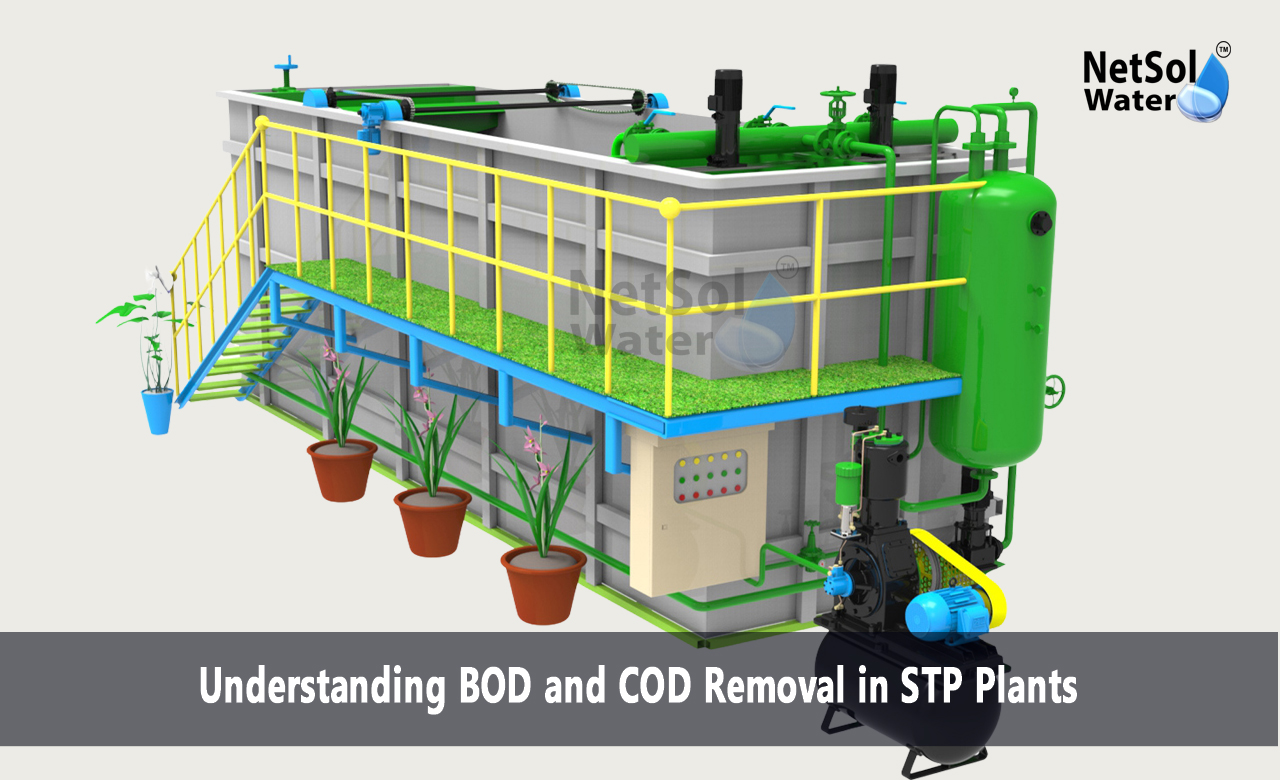How to Remove BOD and COD in Sewage Treatment Plant?
Sewage Treatment Plant or STP Plants must remove harmful substances from wastewater effectively. You measure treatment effectiveness through two key parameters: Biochemical Oxygen Demand (BOD) and Chemical Oxygen Demand (COD). These measurements will tell you the amount of organic pollution in your water. Your STP plant needs to achieve specific BOD and COD removal targets to meet environmental standards. You must use different treatment methods to break down organic matter and reduce these parameters. Plant operators who understand BOD and COD removal will optimize their treatment processes and ensure environmental compliance.
The Science Behind BOD and COD
You must understand BOD and COD principles to operate your STP plant effectively. Let us examine how these concepts will guide your treatment decisions.
Defining BOD: BOD test will measure how much oxygen bacteria need to break down organic matter. You must conduct this test for five days at 20 degrees Celsius. Your water contains more organic pollution when BOD values increase. Bacteria will consume oxygen while they digest waste materials in the sample.
Understanding COD: COD test will determine the total oxygen needed for chemical oxidation. You can obtain these results within a few hours. COD values will exceed BOD readings in the same water sample. You can identify non-biodegradable substances by analyzing this difference.
Relationship Between Parameters: BOD and COD values will reveal different aspects of water pollution. You can determine wastewater biodegradability from the BOD/COD ratio. You must select appropriate treatment methods when ratios indicate hard-to-treat compounds. This information will shape your treatment approach.
Treatment Processes for BOD and COD Removal
STP plant must use multiple treatment stages to reduce BOD and COD. Let us explore how you can make wastewater clean and safe.
Primary Treatment: The screening process will remove large objects from incoming wastewater. You will see heavy solids settle in sedimentation tanks. Your operators must remove oil and grease from the surface. You will achieve initial BOD and COD reduction in this stage.
Secondary Treatment: The biological processes will break down dissolved organic matter. You must provide optimal conditions for aerobic bacteria in aeration tanks. The activated sludge process will create the right environment for bacterial growth. You will see significant BOD and COD reduction through these processes.
Advanced Treatment: The tertiary treatment will remove remaining contaminants. You must use filtration to catch suspended particles. Your advanced oxidation processes will break down resistant compounds. You will polish the water through these steps before discharge.
Monitoring and Optimization
One must monitor and control your processes to achieve BOD and COD removal goals. Let us examine how you can maintain treatment effectiveness.
Sample Collection: The operators must collect samples at specific treatment points. You will need proper sampling techniques for accurate results. Your sample collection timing will affect data interpretation. You must test regularly to track treatment efficiency.
Process Adjustments: The operators must monitor dissolved oxygen in aeration tanks. You should adjust air flow rates according to loading conditions. Your bacterial populations need the right balance to thrive. You will optimize BOD and COD removal through these adjustments.
Performance Tracking: The daily test results will show treatment effectiveness. You can identify process problems through trend analysis. Your historical data will help predict seasonal changes. You must use this information to guide operational decisions.
Conclusion:
STP plant needs effective BOD and COD removal for successful operation. You will maintain treatment efficiency by understanding these parameters. The plant will protect public health and the environment when you master these processes.
Want to improve your STP plant's BOD and COD removal? Our expert team will analyze your processes and recommend specific improvements.
Contact Netsol Water at:
Phone: +91-965-060-8473, Email: enquiry@netsolwater.com



